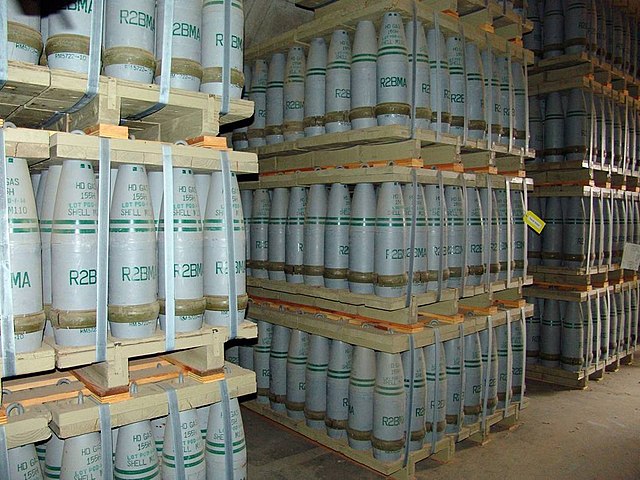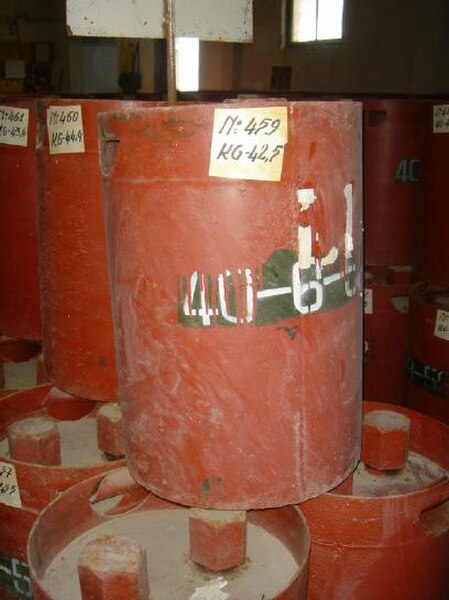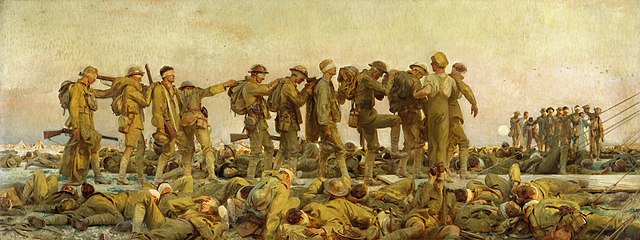The Protocol for the Prohibition of the Use in War of Asphyxiating, Poisonous or other Gases, and of Bacteriological Methods of Warfare, usually called the Geneva Protocol, is a treaty prohibiting the use of chemical and biological weapons in international armed conflicts. It was signed at Geneva on 17 June 1925 and entered into force on 8 February 1928. It was registered in League of Nations Treaty Series on 7 September 1929. The Geneva Protocol is a protocol to the Convention for the Supervision of the International Trade in Arms and Ammunition and in Implements of War signed on the same date, and followed the Hague Conventions of 1899 and 1907.
British troops blinded by poison gas during the Battle of Estaires, 1918
Rabbit used to check for leaks at a sarin production plant in 1970
A chemical weapon (CW) is a specialized munition that uses chemicals formulated to inflict death or harm on humans. According to the Organisation for the Prohibition of Chemical Weapons (OPCW), this can be any chemical compound intended as a weapon "or its precursor that can cause death, injury, temporary incapacitation or sensory irritation through its chemical action. Munitions or other delivery devices designed to deliver chemical weapons, whether filled or unfilled, are also considered weapons themselves."
Pallets of 155 mm artillery shells containing "HD" (mustard gas) at Pueblo Depot Activity (PUDA) chemical weapons storage facility
Image: Soviet chemical weapons canisters from a stockpile in Albania
A British gas bomb that was used during World War I
John Singer Sargent's iconic World War I painting: Gassed, showing blind casualties on a battlefield after a mustard gas attack






